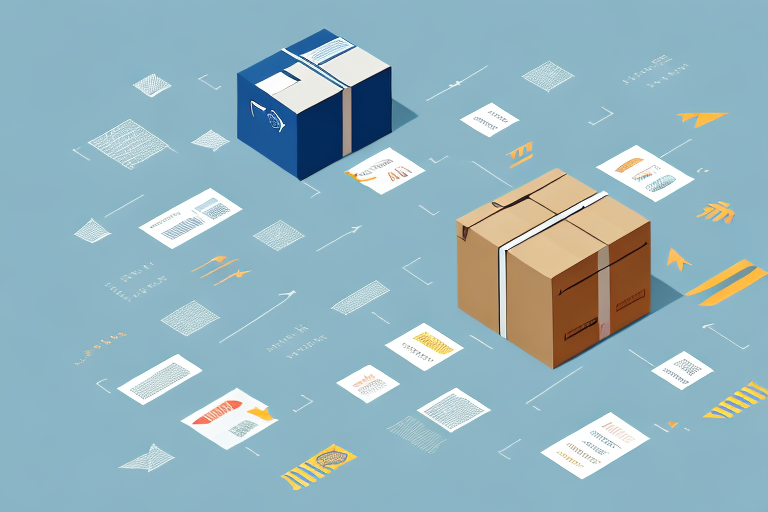Understanding Courier Fees and How to Calculate Them
In today's fast-paced business environment, the efficient and secure transportation of goods and documents is essential. Courier services provide a reliable and timely means of delivery, but navigating the various courier fees can be challenging. This article offers a comprehensive look at courier fees, their types, factors influencing pricing, and strategies for negotiating better deals and reducing costs. Dive in to gain an in-depth understanding of courier fees and learn how to calculate them to enhance your business operations.
What are Courier Fees and Why They Matter to Your Business
Courier fees are charges levied by courier services for the transportation and delivery of packages and documents. These fees are influenced by factors such as weight, size, distance, and additional services like insurance or expedited delivery. Selecting the right courier service and fee structure is crucial for businesses as it directly affects their bottom line. Efficient and timely deliveries can boost customer satisfaction and foster repeat business, whereas excessive fees can erode profits.
Moreover, the reliability and reputation of the courier service play a significant role. Opting for the lowest fee might seem beneficial, but if the service is unreliable—resulting in lost or delayed packages—it can lead to increased costs from lost sales and diminished customer trust. Businesses should also consider negotiating rates based on shipment volumes and the potential for long-term partnerships to ensure both cost-effectiveness and service quality.
Types of Courier Fees
Courier fees encompass various types, each serving a specific purpose and affecting the overall cost of delivery. Understanding these fees is essential for accurately calculating shipment costs:
- Base Fees: Flat charges for standard services like pickup and delivery.
- Weight Fees: Charges based on the weight of the package being shipped.
- Distance Fees: Charges determined by the distance between the origin and destination.
- Express Fees: Additional charges for expedited delivery services.
- Insurance Fees: Costs for insuring packages against loss or damage during transit.
- COD Fees: Charges for collecting payment on behalf of the sender upon delivery.
- Special Handling Fees: Additional charges for handling fragile or hazardous materials.
Understanding these fees helps in determining the applicable charges for your shipments and in calculating the total cost of using a courier service.
Additionally, some courier services may impose extra fees for services like weekend deliveries or residential drop-offs. It's advisable to consult with the courier provider beforehand to be aware of any potential additional costs.
Factors Affecting Courier Fees and How to Optimize
Weight and Size of the Package
The weight and dimensions of your package significantly impact courier fees. Heavier and larger packages incur higher fees due to the increased resources required for transportation. Optimizing packaging by using lighter materials and minimizing package size can lead to substantial cost savings.
Distance and Delivery Speed
The distance between the pickup and delivery locations is a primary factor in determining courier fees. Longer distances typically result in higher costs. Additionally, the speed of delivery—standard, next-day, or same-day—affects the pricing. Opting for standard delivery timelines can reduce costs compared to expedited services.
Additional Services
Services such as insurance, COD, and special handling come with additional fees. While these services add value, it's important to assess whether they are necessary for each shipment to avoid unnecessary expenses.
Seasonality and Demand
Courier rates can fluctuate based on seasonal demand. High-demand periods like holidays may lead to increased fees. Planning shipments during off-peak times can help in securing better rates.
Fuel Prices and Surcharges
Fluctuations in fuel prices can lead to fuel surcharges added to courier fees. Monitoring fuel price trends and negotiating fixed rates with courier providers can mitigate the impact of these surcharges.
By understanding and managing these factors, businesses can optimize courier fees and ensure cost-effective delivery solutions.
Choosing the Right Courier Service for Your Business
Reliability and Reputation
Selecting a courier service with a strong reputation for reliability is paramount. Reliable services ensure timely deliveries and reduce the risk of lost or damaged packages, directly contributing to customer satisfaction and trust.
Service Range and Flexibility
Evaluate the service range offered by courier providers. Services that offer nationwide or international shipping options, flexible delivery schedules, and various delivery speeds can better cater to diverse business needs.
Cost-Effectiveness
While cost is a critical factor, it should not be the sole consideration. Balancing cost with service quality ensures that businesses receive value for their expenditure on shipping services.
Customer Support and Technology Integration
Robust customer support and advanced technology integration, such as real-time tracking and automated notifications, enhance the overall user experience and operational efficiency.
Comparing different courier providers based on these criteria can help businesses select the most suitable partner for their delivery needs.
Tips for Reducing Courier Costs Without Compromising Quality
Consolidate Shipments
Consolidating multiple shipments into a single delivery can take advantage of bulk discounts and reduce per-package costs. This strategy is particularly effective for businesses with high shipping volumes.
Negotiate Long-Term Contracts
Establishing long-term contracts with courier providers can provide leverage for negotiating better rates and securing favorable terms, thereby lowering overall shipping costs.
Optimize Packaging
Using appropriately sized and lightweight packaging minimizes weight-based fees and reduces fuel consumption during transportation, leading to cost savings.
Utilize Technology
Implementing shipping software that integrates with courier services can streamline operations, reduce errors, and provide access to discounted rates through negotiated partnerships.
Leverage Loyalty Programs and Volume Discounts
Many courier services offer loyalty programs and volume-based discounts. Participating in these programs can lead to significant cost reductions over time.
Implementing these strategies enables businesses to minimize courier expenses while maintaining high service standards.
Navigating Courier Contracts: Hidden Fees and Common Mistakes
Understanding Hidden Fees
Courier contracts often include hidden fees such as fuel surcharges, residential delivery fees, and fees for additional services like weekend deliveries or oversized packages. Being aware of these potential costs is crucial for accurate budgeting and avoiding unexpected expenses.
Common Mistakes to Avoid
- Incomplete Shipment Information: Providing accurate package details, including weight and dimensions, is essential for precise fee calculations. Inaccurate information can lead to overcharges or delays.
- Ignoring Additional Charges: Failing to account for additional fees like insurance or special handling can result in underestimating shipping costs.
- Choosing the Cheapest Option: Opting solely for the lowest fee can compromise service quality, leading to issues like delayed or lost packages.
- Lack of Rate Comparison: Not comparing rates from different courier providers can prevent businesses from securing the most competitive pricing.
By thoroughly reviewing contracts and avoiding these common pitfalls, businesses can ensure more accurate courier fee calculations and better financial planning.
How Technology is Changing the Courier Industry
The courier industry is undergoing significant transformations driven by technological advancements. Innovations such as GPS tracking, real-time package monitoring, and automated sorting systems have enhanced delivery accuracy and transparency. Furthermore, emerging technologies like drone delivery and autonomous vehicles hold the potential to revolutionize the industry by reducing delivery times and operational costs.
Integrating these technologies not only improves efficiency but also provides businesses and customers with enhanced visibility into the delivery process. Staying abreast of these technological trends is essential for businesses to remain competitive and leverage the benefits of modern courier services.
Case Studies: How Businesses Have Saved Money on Courier Fees
Real-life examples illustrate how businesses can effectively reduce courier costs while maintaining service quality:
- Consolidation for Bulk Discounts: A retail company consolidated its weekly shipments, leveraging bulk discounts to achieve a 25% reduction in courier fees.
- Negotiating Fuel Surcharges: An e-commerce business negotiated with its courier provider to cap fuel surcharges, resulting in annual savings of $5,000.
- Optimizing Packaging: A manufacturing firm redesigned its packaging to be more compact and lightweight, leading to a 15% decrease in shipping costs.
These case studies demonstrate that strategic actions can lead to significant cost savings and improved operational efficiency.
Conclusion: Key Takeaways on Understanding and Calculating Courier Fees for Your Business Success
Courier fees are a critical component in the efficient and reliable transportation of goods and documents for businesses. A thorough understanding of the different fee types, factors influencing pricing, and cost-saving strategies is essential for accurately calculating courier costs and maintaining budgetary control. By carefully selecting courier service providers, leveraging technology, and implementing strategic cost-reduction measures, businesses can enhance delivery efficiency and achieve substantial savings. Staying informed about industry trends and technological advancements will further empower businesses to make informed decisions, ensuring sustained success in their logistics operations.




















